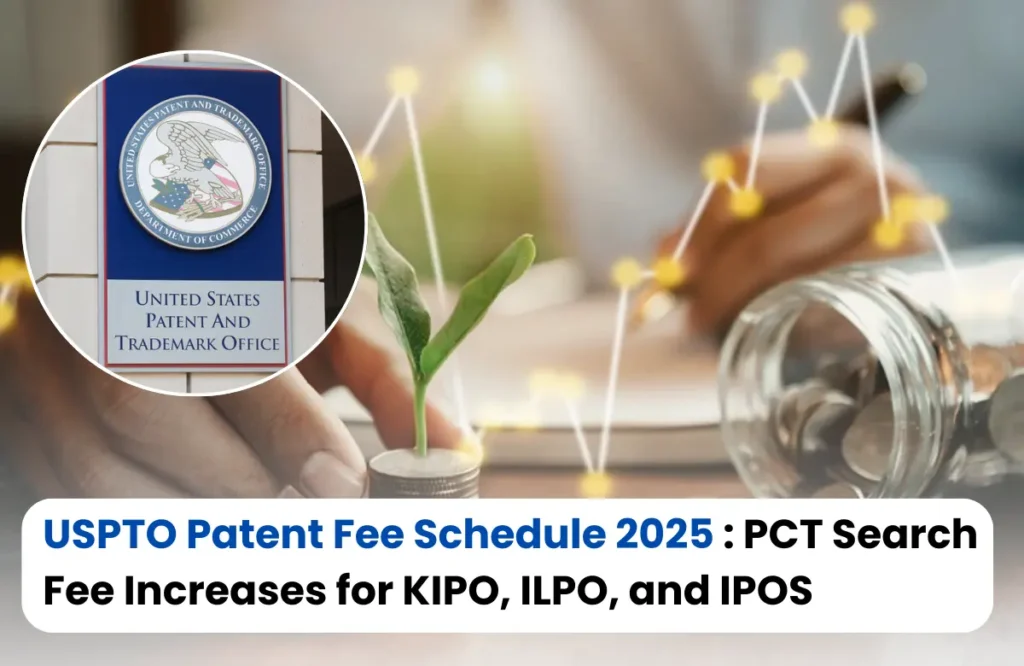
A major update has arrived for intellectual property holders, especially patent applicants. On September 1, 2025, the United States Patent and Trademark Office (USPTO) released revisions to its patent fee schedule, including changes to the Patent Cooperation Treaty (PCT) international search fees. USPTO Patent Fee Schedule 2025 , This update is particularly significant for applicants choosing the Korean Intellectual Property Office (KIPO), Israel Patent Office (ILPO), or the Intellectual Property Office of Singapore (IPOS) as their International Searching Authority. Understanding these fee adjustments is crucial for anyone planning international filings, as they directly impact the cost of securing patent protection abroad. If you want to know exactly what changes have been made to the search fees, keep reading.
What is the New USPTO Patent Fee Schedule 2025?
On September 1, 2025, the USPTO implemented updates to its Patent Cooperation Treaty (PCT) fee schedule, specifically affecting international search fees.
- Korean Intellectual Property Office: Search Fee = USD 825 to USD 888
- Israel Patent Office: USD 1,118 to USD 1,220
- Singapore: Charge = USD 1,719 to USD 1,849
These adjustments, driven largely by exchange rate fluctuations, directly impact applicants selecting these International Searching Authorities (ISAs) and add to the overall cost of pursuing international patent protection.
Reasons Behind the USPTO Patent Fee Increases in 2025
The USPTO’s 2025 fee increases are not random—they’re driven by several practical reasons.
- First, the agency runs entirely on applicant fees, so adjustments are needed to keep up with inflation and rising operating costs.
- Second, higher charges for things like extra claims, repeated RCEs, or large IDS submissions are designed to encourage applicants to file more efficiently, easing the workload on examiners.
- Third, new continuation surcharges make up for lost maintenance fee revenue when applications are filed very late in the process. On the international side, the PCT search fee increases for KIPO, ILPO, and IPOS are tied mainly to currency exchange fluctuations, ensuring fees fairly reflect real service costs abroad.
- Finally, these extra funds also support modernization efforts, like better digital systems and improved patent examination quality.
Read Also: Patent Infringement Explained: Effects, types and Consequences
What Do the 2025 USPTO Patent Fee Changes Mean for Applicants?
- Filing, search, and examination fees increased by about 10%, raising the baseline expense for every new patent application.
- Costs for excess claims, repeat RCEs, and large IDS submissions rose sharply, making complex or broad applications more expensive.
- PCT search fees for KIPO, ILPO, and IPOS went up, leading applicants to reassess which ISA provides the best cost–benefit balance.
- Applicants may narrow claims, avoid unnecessary continuations, or limit IDS size to control costs.
- By discouraging inefficiencies, the USPTO aims to reduce examiner workload, speed up processing, and improve overall patent quality.
Conclusion
The USPTO’s 2025 fee increases raise costs at nearly every stage of the patent process, but they also push applicants toward more efficient and strategic filing. While the changes may feel burdensome in the short term—especially for startups and smaller entities—they are intended to streamline examination, improve patent quality, and strengthen the overall system.









